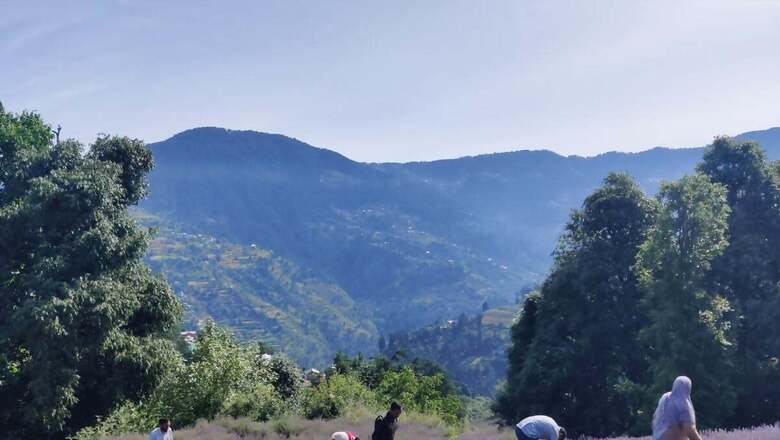
views
‘Purple Revolution’, which started with the large-scale cultivation of the lavender flower in Jammu and Kashmir’s Bhadarwah, is now attracting farmers from across the country.
Confirming this, MoS Science and Technology Jitender Singh told News18, “Himachal Pradesh is trying to replicate Bhadarwah’s success… The chief minister met me in this regard. The Uttarakhand government has contacted CSIR (Council for Scientific and Industrial Research) Dehradun. Gujarat has also sent a proposal to see if some parts of the state is conducive for lavender cultivation.”
But the biggest success story is from the northeast.
Lamphrang Thongni is a full-time mechanic and a part-time farmer in Meghalaya. He grew just enough vegetables on his hilly patch of land to sustain his family. But today Thongni is being honoured as a trendsetter in his state’s tryst with Lavender farming.
Thingni’s inspiration is the nondescript hill town in Jammu and Kashmir’s Doda district. Bhadarwah started the Purple Revolution in 2016. Today, the model is being sought by agriculturists across the country.
“We were potato, cucumber growers…. whatever we grew was just enough for our own consumption…there wasn’t a market beyond that. But this crop (lavender) provided us an alternative source of income,” Thingni tells News18 on the sidelines of the lavender festival by the CSIR.
What Exactly is the Purple Revolution?
Purple Revolution is the name given to the growing reach of lavender cultivators from J&K. Lavender was cultivated in small patches of Kashmir before Bhadarwah’s Bharat Bhushan, egged on by CSIR, sowed the purple flowering plant on a small patch of his land. Bhushan, who worked as a guard in the Jal Shakti ministry, hit the jackpot within three years. “My income doubled in the first two years and is now four times what I earned 10 years ago,” Bhushan tells News18.
Om Raj, 75, sowed maize all his life. Encouraged by the success of young farmers in his village Lehrot, he sowed lavender in half of his farm. “Earlier, I had a ‘jhopdi’ (hut) but now I have a ‘pucca makaan’ (house),” the elderly farmer said when asked if his life has changed for the better because of lavender farming.
Compared to maize, the lavender flower requires less physical and financial investment, and the shrub lasts for 15 years, cultivators said. It has minimum irrigation needs and is also avoided by monkeys, which are nemesis of the maize growers.
These advantages mean 2,500 farmers in Doda’s Bhadarwah have taken to the lavender cultivation across 6,000 hectares. Traditionally, the farmers are maize and rajma growers.
The Central government has set up steam distillation plants, which help farmers extract essential oils. Some have also started producing soaps, cleansing products and lavender honey.
CSIR announced the third phase of aroma mission on Sunday to encourage the lavender farmers further.














Comments
0 comment